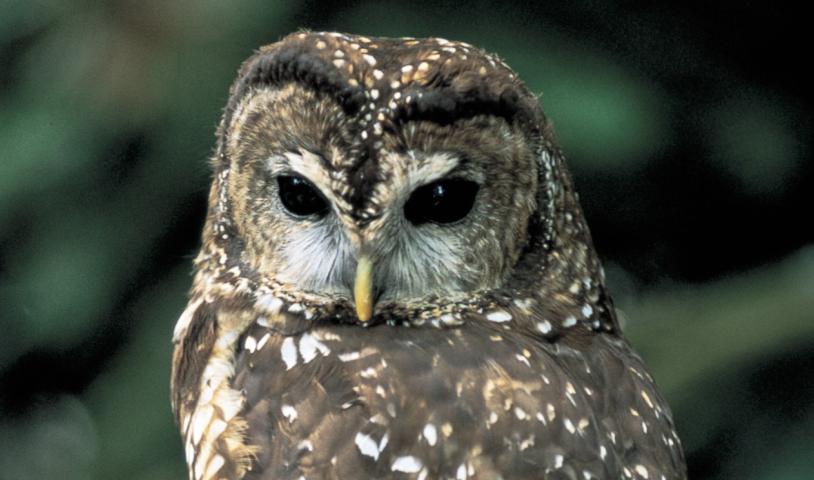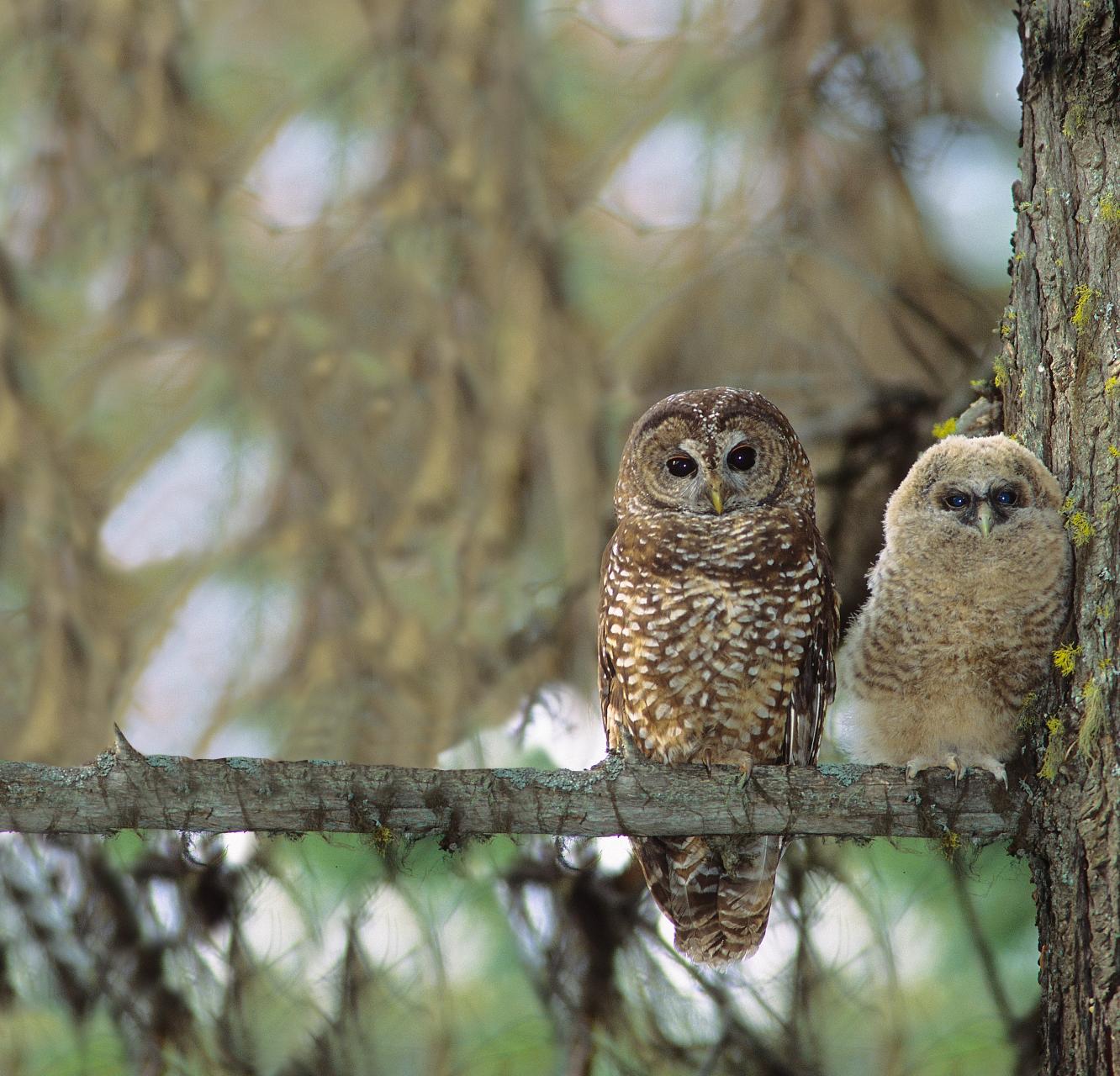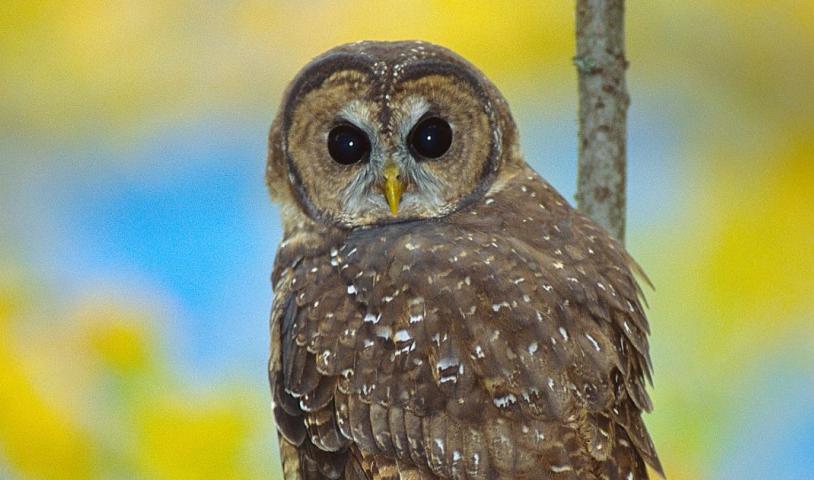Captive spotted owls down to seven after death
Thursday, October 9, 2008
Rare male bird dies of 'head trauma' in controversial program
Environmentalists are downright owlish after the death of a male spotted owl in the provincial government's controversial captive-breeding program.
The death reduces the number of birds in the program to seven and the number of owls in the wild to either seven or nine -- about a 50-per-cent drop from 2007 when there were 17 wild birds in B.C.
Andy Miller, staff scientist with the Western Canada Wilderness Committee, said initial projections had wild spotted owls becoming extinct by 2010 but he now believes they could disappear in B.C. by next year.
"It's scary," said Miller, a member of the spotted owl recovery team. "There is reason for alarm -- this current population decline over the last few years is faster than scientists had predicted."
Historically, B.C. has had about 500 wild breeding pairs.
But now we are down to two pairs and three individuals in the wild -- according to Miller's count -- due to logging of old-growth habitat and competition from barred owls.
Miller said there are five remaining wild spotted owl sites in B.C. -- a pair lives in Summalo near Manning Park; one bird lives in the Anderson River valley near Yale; an individual lives in the Billy Goat area near Garibaldi Park and a pair and an individual live in the Stein Valley park.
Ian Blackburn, a wildlife biologist with the Ministry of the Environment, said there are nine wild owls, with the discrepancy being one additional bird in the Stein Valley and one in Cayoosh Creek.
Blackburn said the male, captured from the Cayoosh Creek area, died about five days after it arrived at the Mountain View Conservation and Breeding Centre in Langley.
"It did have an autopsy and died from head trauma at the back of the base of its head," Blackburn said, adding the owl likely hit his head on its enclosure.
Keith Ferguson, staff lawyer for Ecojustice Canada (formerly Sierra Legal), said his group is considering asking Ottawa to intervene in the owl crisis under the Species at Risk Act -- as it did in 2004 -- if Victoria does not do more to protect the owls' preferred habitat of old-growth coniferous forests.
"It's always disappointing to hear one of the owls in the captive breeding program has died," Ferguson said. "But unless we protect habitat there is little point in having the program. Right now, the protected areas are not large enough and too patchy."
Blackburn noted Victoria announced a $3.4-million plan to rebuild the owl population in 2006.
He said both pairs in the breeding program laid eggs this year, with one female surviving to become the first captive-born spotted owl.
Miller said the WCWC plans to set up a protest/research camp next week at the owls' Billy Goat site to draw attention to the owls' plight.
© The Vancouver Province 2008





